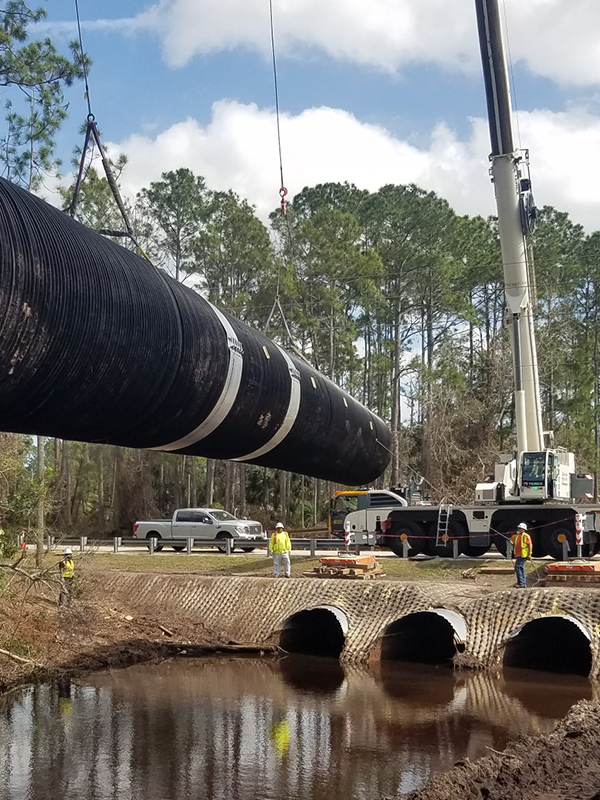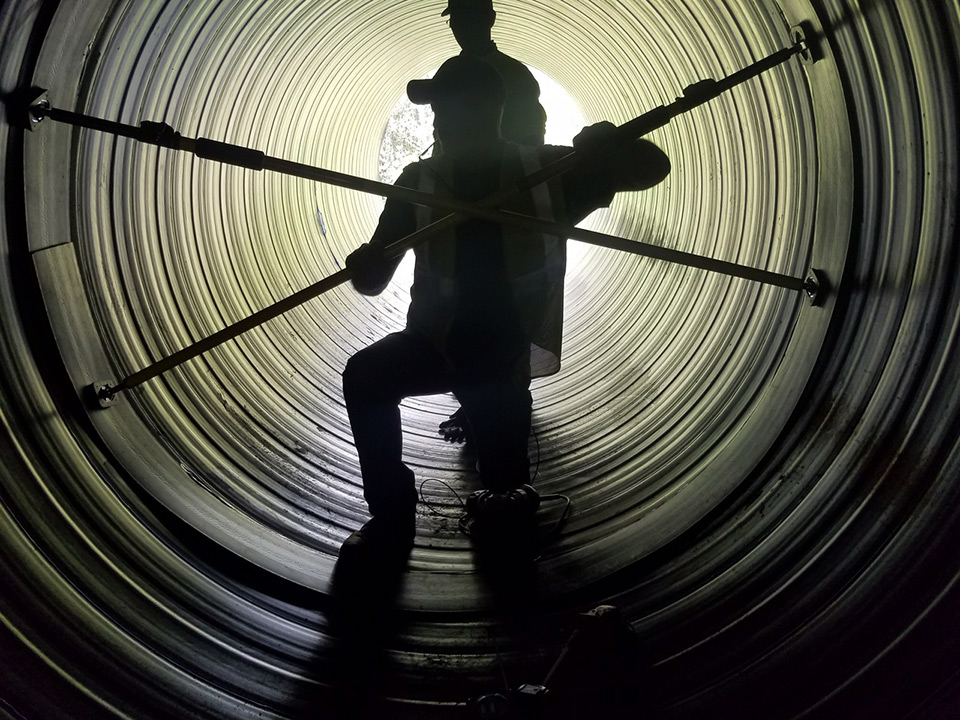Slip Lining & Pipe Restoration
Shenandoah are the experts to call for slip lining & pipe restoration throughout the state of Florida and SE Georgia. In fact, Shenandoah excels in all areas of trenchless pipe repair. The methods we employ include slip lining and the use of mechanical sleeves. Each of these methods have applications where they are best suited, but they are both cost effective and less disruptive than excavating pipeline. So, if you need slip lining & pipe restoration call or contact us today.
What is Slip Lining & What are the Major Benefits?
Slip lining, as the name implies, is the process of inserting a smaller pipe into an existing pipe. It is ideal for repairing not only sanitary sewer pipelines, but it is also ideal for repairing stormwater sewer pipelines too. Shenandoah technicians use HDPE, a thermoplastic of high-density polyethylene. HDPE is ideal for this application because it is low in weight, resists corrosion, has strong impermeability properties, and can also be used in high pressure environments. Additionally, it is used most often when the host pipe is either concrete or steel. Once the host pipe is cleaned of any obstructions or debris, the slip line pipe is either pulled or pushed into the old pipe and then chemical grouting is employed to seal the ends and join the pipes together.
Slip Lining is a trenchless pipe rehabilitation solution that can be installed quickly and cost-effectively.

Some of the major benefits of slip lining are:
Slip lining with HDPE can last for up to 100 years!
HDPE slip liners eliminate corrosion or leakage concerns
It’s completely trenchless with no digging, no disruption, and no mess
While initially cost effective, slip lining is also low maintenance going forward
The insertion of the slip lining pipe actually strengthens and supports the host pipe
What are Mechanical Sleeves?
There are situations when it isn’t necessary to reline an entire pipe. In these cases, mechanical sleeves are used for point repairs to the damaged area of a pipeline. Sleeves are made of high-grade stainless steel and are used to make repairs on clay, concrete, reinforced concrete, plastic, cast iron, steel, and other pipe materials. CCTV robotic technology is used to inspect the pipe and determine if conditions in the pipe will allow for the insertion of a mechanical sleeve. If the pipe is not severely damaged, then it is thoroughly cleaned using a high-pressure jet or a drag scraper to prepare it for the insertion of the mechanical sleeve. Installation in smaller diameter pipes are done with CCTV robotics and a “packer”. In some applications lasers are used to assist in joining the sleeve to the host pipe. For repairs to large diameter pipes mechanical sleeves are installed manually.
What are the Major Benefits of Mechanical Sleeves?
As with slip lining, it’s a trenchless operation
Installing mechanical sleeves has a minimal effect on capacity and flow reduction
Mechanical Sleeves are suitable for pipe of all sizes
Since this is a point repair it negates the need to re-line the entire pipe
OUR CUSTOMERS
COMMERCIAL
HOA/PROPERTY MANAGEMENT
INDUSTRIAL
GOVERNMENT

IRM PROGRAM
Our Inspection, Restoration, and Maintenance (IRM) Program has helped maximize the performance of our customers sanitary and stormwater systems for over 45 years.


